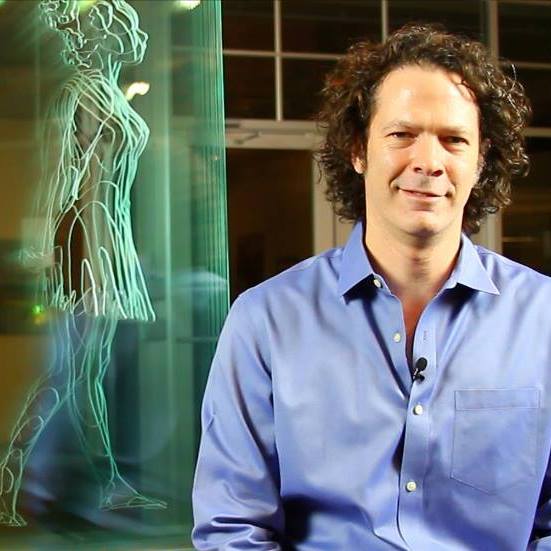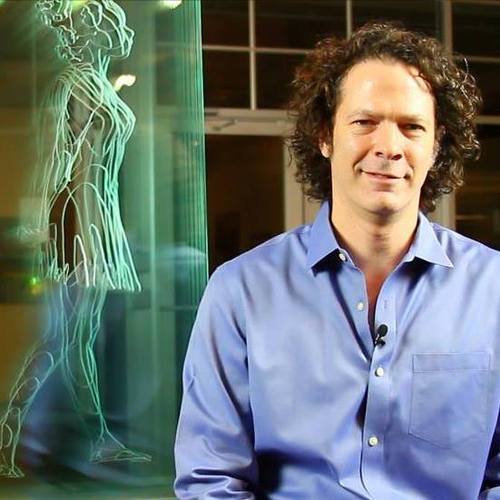

Jed Malitz combines art, science and technology in the creation of his architectural glass sculptures. Based on live-modeled 3D photography, his subjects are defined both physically and non-physically, through 3D glass silhouettes and their redirected light. These silhouettes are the edges of holes cut through architectural glass panels, and they suggest the physical outlines of human forms. The silhouettes also project alternate perspectives of their subjects (as redirected ambient light) to the outer edges of their panels where distinct and separate human forms are revealed. These non-physical forms of light appear to be more solid than the physical forms in cut glass.
The people who posed for these sculptures are subtly yet specifically recognizable in the finished works.
The artist refers to these sculptures as “Windows Into Souls”, for their subject’s hidden perspectives revealed only through their refracted light.
His works have been featured numerous times in print, television and online.
After graduating with a bachelor’s of arts degree (centered on math and computer science) from the University of Colorado at Boulder, Malitz pursued a career in information technology (IT) for the next 25 years, with a focus on computing in biotechnology. During his time in IT, his responsibilities frequently included investigating the features and limitations of various technologies.
In 2009 Malitz first dreamed of ethereal human forms made of floating ribbons. In 2011, Malitz ended his IT career to dedicate himself to art, and to focus on creating the ethereal forms he had dreamed of earlier. He live-modeled three figures from human subjects, and completed building their sculptures in 2012.
In 2013 Malitz began efforts towards the goal of depicting The Crucifixion for the first time in large-scale sculptural glass. Rather than depicting light radiating out from Christ as was traditionally done, the artist has used light itself to depict Christ. The Crucifixion artwork was completed in 2014.
On commission, the artist can depict virtually any scene or subject in sculptural glass. Given the scale of these works, they are suitable for placement into corporate, institutional, government or religious environments, or into the private residences of discerning collectors. Malitz will be working with architects and interior designers to physically integrate future works into the interior structures of buildings, as well as continuing to build standalone glass sculptures.
The artist’s goals are to evoke moments of contemplation and wonder, to surprise and delight, and to move people spiritually or emotionally through his novel glass sculptures.



